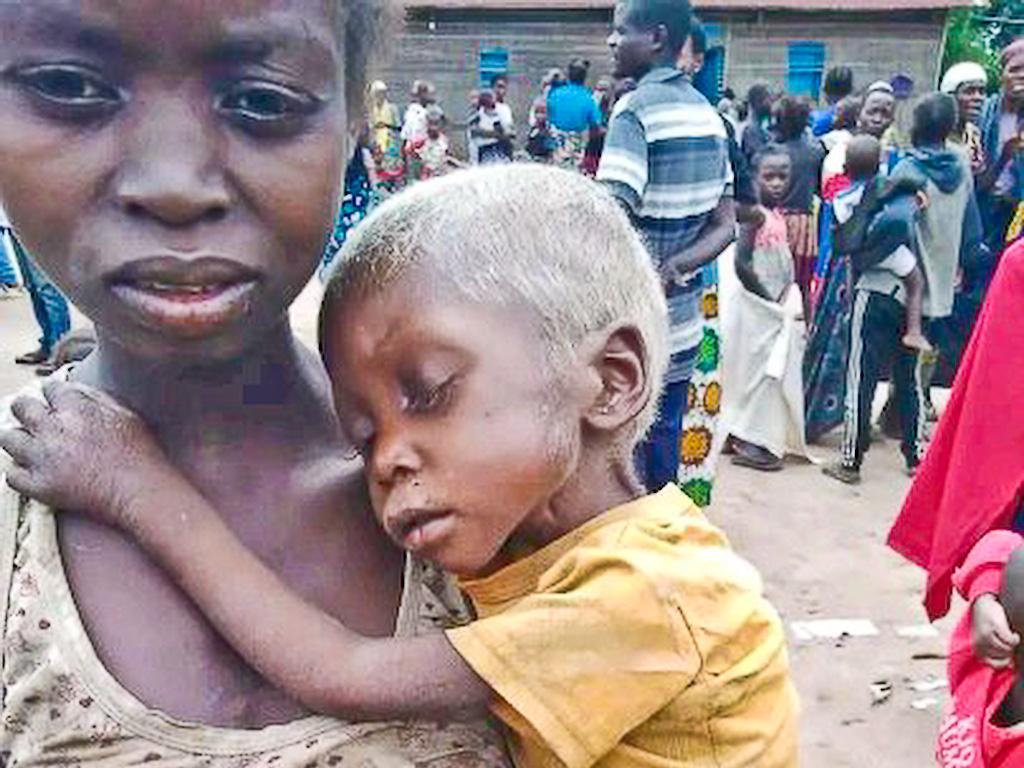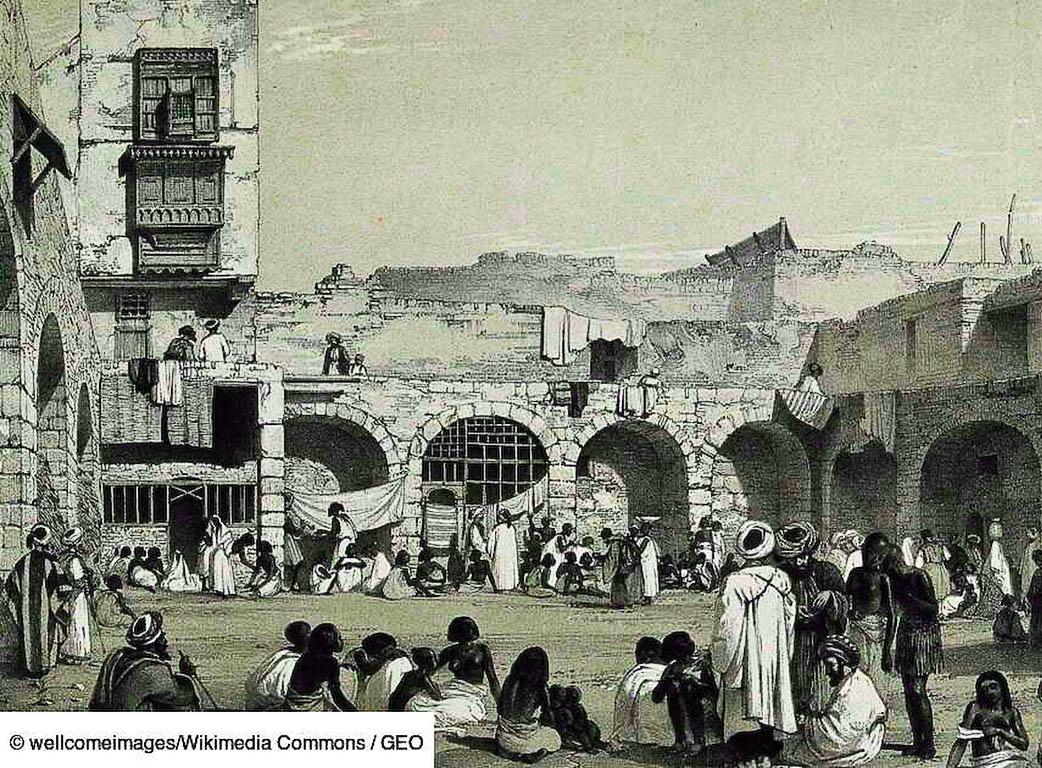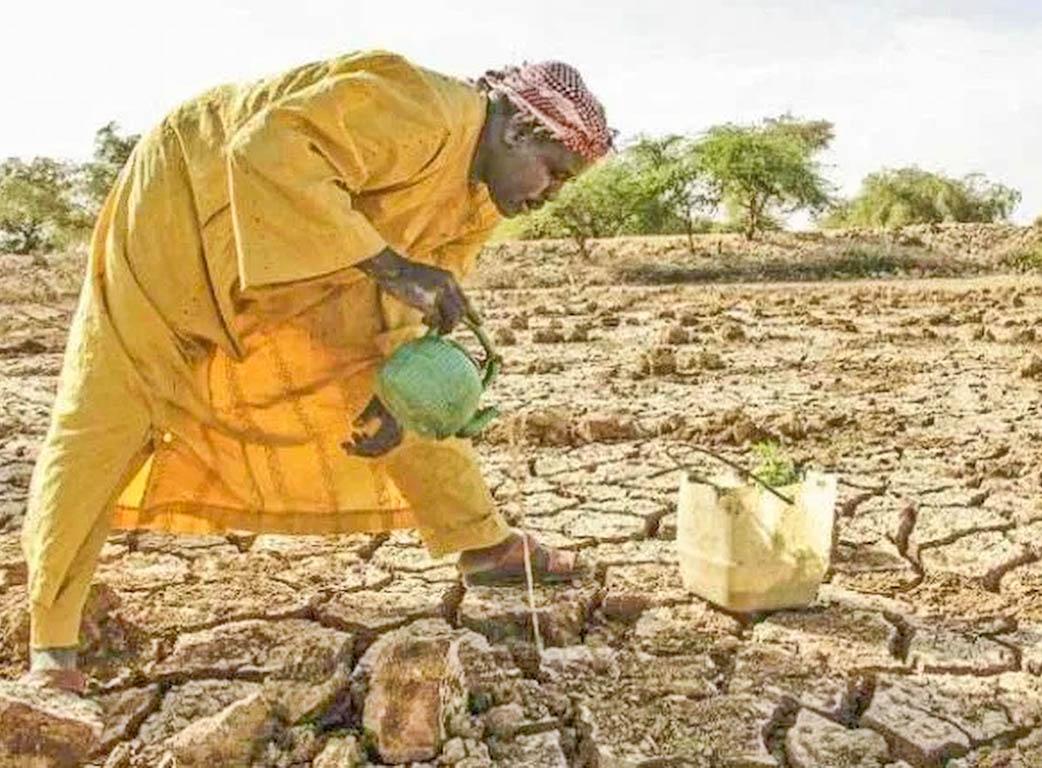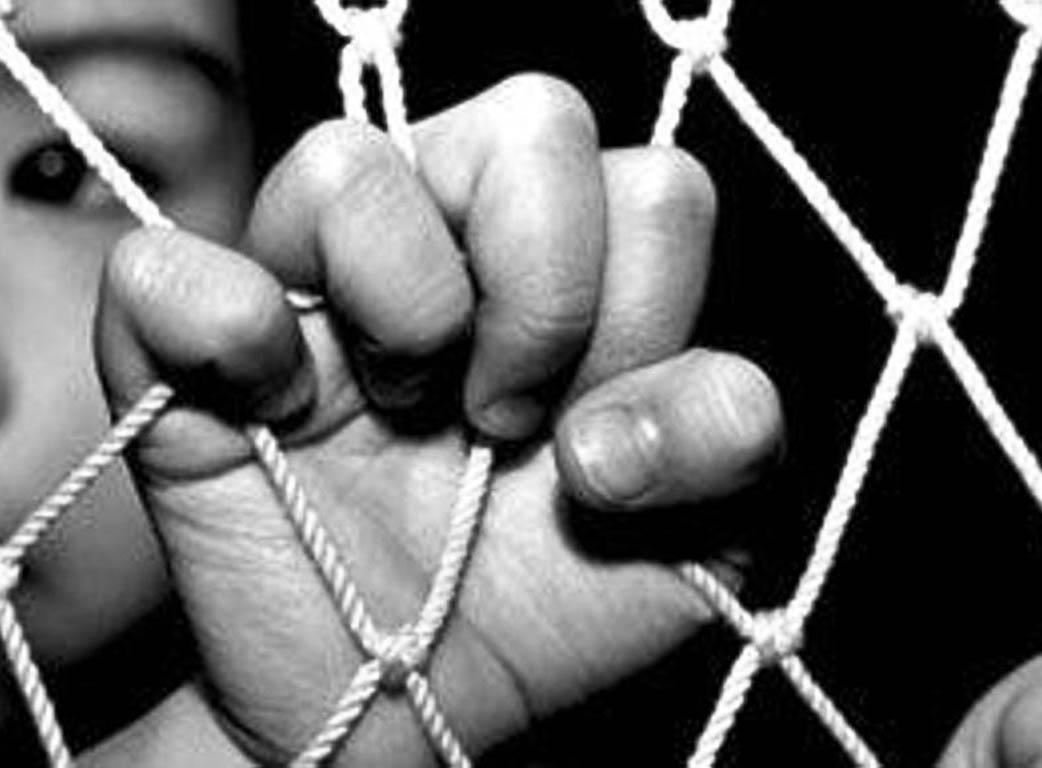What Is Modern Slavery
Website Planet 29.01.2025 Arnold Mutinda Translated by: Jpic-jp.orgOver 49.6 million people (0.61% of the global population) are subjected to modern slavery. Most common forms of modern slavery are Forced labour, state-imposed and privately-imposed, as well as commercial sexual exploitation, and Forced marriage. Women represent 54% of victims, men 46%. 75% are adults, 25% are children. 15% of victims are in high-income countries, 72% in middle-income countries, and 13% in low-income nations. Modern slavery increased by nearly 25% and Forced marriage up by more than 40% between 2016 and 2021. Forced labour is prevalent in non-domestic services, manufacturing, and construction sectors where high demand is for unskilled labour.

More than 49.6 million people (0.61% of the global population) are subjected to slavery worldwide. To put this grim fact into perspective, if enslaved people were to rally together, they would be the 30th most populous country, with a higher population than 200+ nations. According to indicators this number is likely to increase in the coming years. Many consider slavery a bygone evil: the reality is that slavery is a serious contemporary issue.
Modern slavery is a broad term that encompasses various forms of exploitation and forced labour, in which individuals are deprived of their freedom and coerced into working or marrying against their will. Although today’s victims are not openly enslaved as they were in centuries past, millions of people still face a subtler form of slavery and, for the most part, their suffering goes unnoticed. Let’s say that modern slavery cannot be stopped if it continues lurking in the shadows — it must be a part of the global discourse.
Global Estimates
People worldwide, affected by modern slavery, are 49.6 million which equates to 6.3 victims for every 1,000 individuals. When analysing the data, one of the first things that stands out is that adults constitute 75% of the victims, while a notable 25% are children. Furthermore, modern slavery affects more females than males at the rate of 6.9‰ vs. 5.8‰.
Slavery is often thought to be an issue for low-income countries, as lack of funding and political instability make governments ill-equipped to protect their population. Still, the statistics suggest that 15% of victims are found in high-income nations, 72% in middle-income countries, and 13% in low-income nations.
So, although they have the highest share of the population in slavery (9.6‰), low-income countries have the fewest slaves. This is likely because wealthier countries have a demand for labour in low-paying positions, which their citizens are unlikely to fill. Vulnerable citizens from lower-income or conflict-ridden territories are trafficked to meet this labour shortage, resulting in a higher number of slaves in wealthier countries.
The Troubling Trajectory of Modern Slavery
Current trends show that modern slavery is a growing problem. Between 2016 and 2021, the total number of victims increased by almost 25%. Forced marriage saw the highest growth rate, increasing by more than 40% during this five-year period, highlighting the urgency of addressing forced marriage on a global scale. Actually this type of modern slavery affects the highest number of people, accounting for 44% of all recorded victims. For comparison, forced labour saw a less dramatic increase of approximately 10% between 2016 and 2021.
The fact that privately imposed forced labour — that is when a citizen or private organization exploits other individuals — far exceeds its state-imposed counterpart (35% vs. 8%) suggests that most cases are fuelled by illicit profits, especially because an additional 12% of cases are forced commercial sexual exploitation — that is when people are forced into sex work so that the slaver can make a profit.
However, the largest share (44%) of modern slavery cases correspond to forced marriages. Although the practice may be viewed as traditional in some cultures, international organizations such as the United Nations have deemed it a violation of Human Rights, while others, such as the International Labour Organization, regard it as one of the most pervasive types of modern slavery.
Now, let us dive deeper into each one of these forms of human exploitation.
Forced Labour
Forced labour refers to those instances where people use force or intimidation tactics to coerce others into working against their will. This category includes state-imposed forced labour, privately-imposed forced labour, and forced commercial sexual exploitation.
Privately-Imposed Forced Labour. Globally, non-state actors exploit 17.3 million people as forced labourers, and almost two-thirds of all those victims are male. This is likely because, apart from domestic work and forced sexual exploitation, most of the economic sectors using forced labour involves hard manual work. It is probably also why forced labour is adult- dominated (only 8% of the victims are children).
As to where they are enslaved, only 13% of all victims of privately-imposed forced labour are exploited in low-income countries: high-income and upper-middle-income nations account for 24% and 26% of forced workers, respectively. This means that lower-middle-income countries have the largest number of people, which other non-state agents exploit.
Incidentally, low-income countries are also the ones that have the highest prevalence rate, with 3.4 out of every 1,000 residents being victims of privately-imposed forced labour. High-income countries are a close second, with a prevalence rate of 3.3‰.
With slavery being illegal almost everywhere, privately-sponsored forced labour usually takes the form of labour trafficking. This is where criminals pose as employment agents to subject victims to working without pay. This happened, for instance, during the construction of Qatar’s World Cup stadiums. The private construction companies contracted to build stadiums and other critical infrastructure for the biggest sporting event in the world used employment agents to source employees from Asia and Africa. These agents charged the workers exorbitant “processing” fees, confiscated their passports upon arrival, withheld their wages, and subjected them to inhumane working and living conditions. Thousands of workers died, and thousands more returned home with much less than they were promised. While private entities were the ones who directly exploited the workers, the Qatari government is complicit through its reluctance to enforce basic labour and human rights standards for its migrant workforce.
State-Imposed Forced Labour
This type of modern slavery affects approximately 3.9 million people globally. For the most part, state-imposed forced labour follows the same pattern as privately-imposed forced labour. It is very male-dominated (78% vs. 22%) and has a very low — though not insignificant — children rate (8%). The main difference comes down to where the victims are exploited.
While almost a quarter of slave labourers exploited by the private sector are in high-income countries, only 3% of state-imposed forced labourers are in wealthy nations: 51% are in upper-middle-income states, 8% are in lower-middle-income nations, and the remaining 38% are in low-income countries.
Now, although the bulk of state-imposed forced labour happens in upper-middle-income nations, low-income countries have the highest prevalence rate (2.1‰). In other words, the majority of the people who are exploited by the government are located in upper-middle-income countries, but people in low-income nations have a higher chance of being forced to work by the government’s orders.
An example of this imposed forced labour is in China’s Xinjiang province where the Uighurs — a religious and ethnic minority group — are facing persecution, ostensibly for their failure to “assimilate.” More than 1 million Uighurs are in detention camps where, among other injustices, they are forced to work in factories. Under the government’s orders, they manufacture clothing, consumer electronics, pharmaceuticals, and other goods for China’s domestic and export markets.
There are other modern-day examples, including some happening in the United States. Back in 2019 and 2020, two class action lawsuits were filed against the states of Arizona and California. While slightly different, both actions allege that the states practice slavery when sending prisoners to private prisons where they are forced to work without pay for the monetary benefit of the prison shareholders and its executive management.
Forced Commercial Sexual Exploitation
Approximately 6.3 million people are exploited as commercial sex workers. Unlike other types of forced labour, commercial sexual exploitation disproportionately affects female victims (78% vs. 22%) and 1 out of every 4 victims is a child (under 18 years of age). Moreover, more than 70% of all these victims are in middle-income countries; 19% are in high-income nations, and the remaining 9% are exploited in low-income countries.
A possible explanation is that middle-income countries strike a “good” balance regarding law enforcement gaps and a relatively wealthy economy, which makes them favourable for sexual slavery. For comparison, low-income nations tend to have lax law enforcement structures, but poverty makes them subpar markets for criminal slave rings. High-income countries, on the other hand, are lucrative markets for criminal slave rings, but their robust law enforcement and criminal justice systems are a deterrent for commercial sexual exploitation. However, we find the highest prevalence rate of forced commercial sexual slavery in high-income countries, with 1 out of every 1,000 residents being exploited as sex workers.
The Flux of Forced Labour
As of 2021, privately-imposed forced labour was responsible for the bulk (63%) of forced labour globally, followed by state-imposed forced labour (23%) and forced commercial sex exploitation (14%). Comparing forced labour statistics from 2016 and 2021, we can see an increase in privately-imposed forced labour and forced commercial sexual exploitation. This is consistent with the data, which showed modern slavery is trending upwards. However, during the same period, the number of state-imposed forced labour victims significantly reduced. As modern slavery gets more attention from people and organizations around the globe, governments seem to be cutting back on inhumane exploitation, lest they are ostracized by the international community.
Uzbekistan is a good example of how effective international pressure can be. Previously, the government used forced labourers (including children) for their massive annual cotton harvest. Yet, in 2021, international pressure and threats of economic sanctions proved to be a successful incentive for the country to drastically decrease its reliance on modern slavery. Nowadays, forced labour in Uzbekistan is almost imperceptible.
Where Is Forced Labour More Prevalent?
More than half (55%) of all victims of forced labour are exploited in the Asia-Pacific region. probably because the region accounts for most of the global population: 4 of the 5 most populous countries in the world are Asian, with India and China exceeding 1 billion each.
In terms of global distribution, Europe and Central Asia follow as a distant second (15%), then Africa (14%), the Americas (13%), and the Arab states (3%). Interestingly enough, the region with the fewest people experiencing forced labour is also the one that has the highest prevalence rate, with 5.3 out of every 1,000 residents being exploited.
We can spot a similar trend if we look at the geographical distribution of forced labourers categorized by nations’ income instead of by region. It seems like the higher the percentage distribution, the lower the prevalence rate is. As mentioned above, middle-income countries have fairly robust economies and relatively inefficient law-enforcement systems. This creates a conducive environment for modern slavery, which translates into a high percentage of forced labour. Upper-middle-income and lower-middle-income countries account for one-third of forced labour cases each, yet they boast the lowest prevalence rates (3‰). Low-income nations, on the other hand, have half the percentage distribution and double the prevalence rate than middle-income countries. This is likely because people in low-income countries are typically more vulnerable to exploitation.
See What Is Modern Slavery: A Comprehensive Research with more information and a very good lot of graphics.





















 EDitt | Web Agency
EDitt | Web Agency
Leave a comment